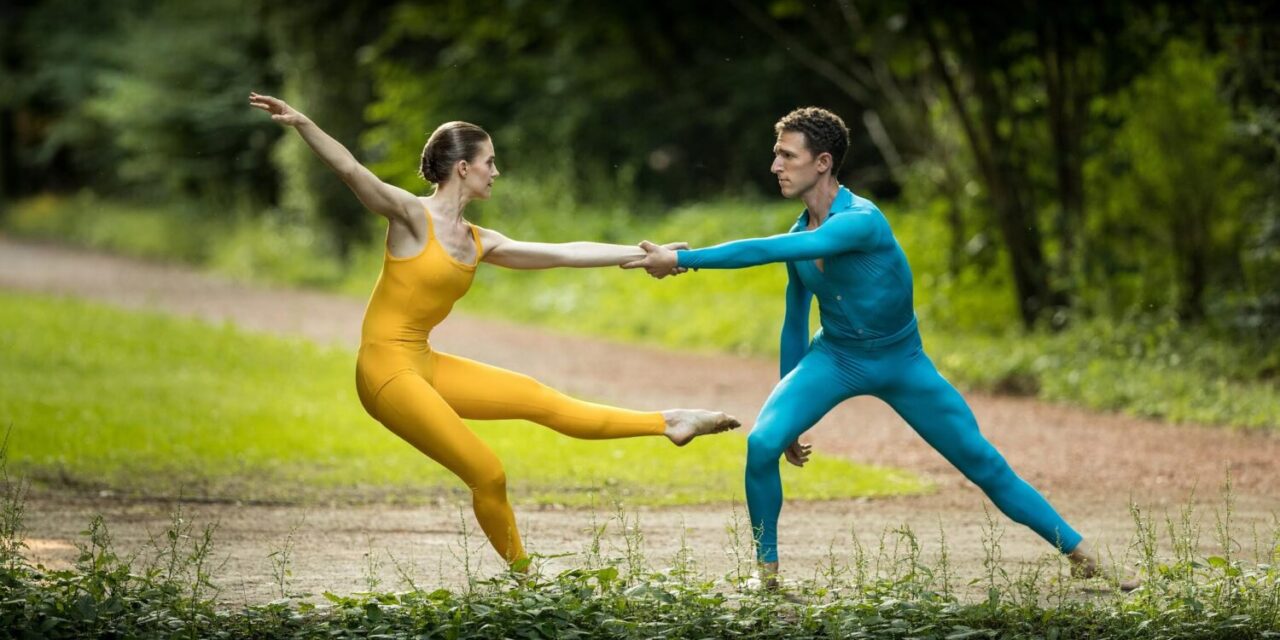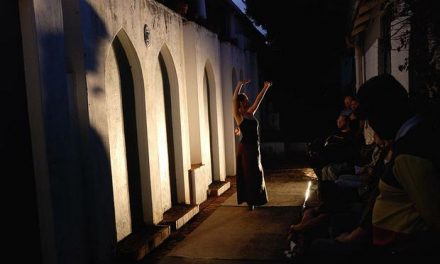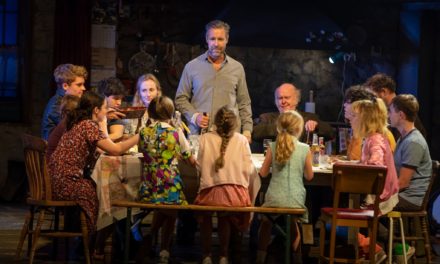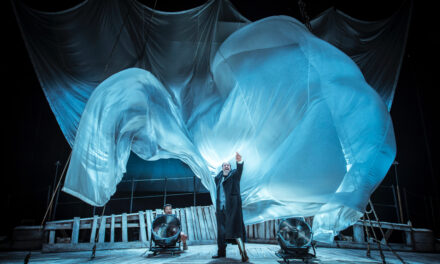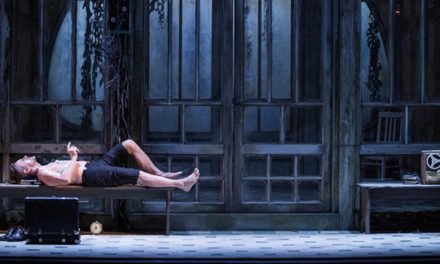Cunningham Directed by Alla Kovgan
“A 3D cinematic experience about legendary American choreographer Merce Cunningham (…) creating a moving and visceral journey through Merce’s world” is how Alla Kovgan’s film Cunningham, marking the artist’s 2019 centenary is promoted.
Yet this grandiose description leaves the cinemagoer slightly confused as to what to expect. Is it a new, interdisciplinary artwork in the spirit of an artist whose name is synonymous with innovation in the field of contemporary dance, and who is known for his experiments with the intermediality of dance and film? Or should we expect a genre-breaking, immersive documentary, honoring said artist’s life and work? The ensuing 95 minutes are neither, but rather a somewhat conflicted mélange.
New York-based filmmaker, Alla Kovgan works in interdisciplinary collaborations. For instance, she is the co-director of the award-winning dance short film, Nora (2008), “a poem of sound and image” based on the life of Zimbabwean-born dancer and Bessie Award winner Nora Chipaumire. Kovgan’s first full-length documentary as sole director, Cunningham(2019) is an immersive, sensual but insubstantial feast for the eye whereby dance pieces are interspersed with information about Cunningham’s working process during his earlier, formative decades. The film switches between black and white documentary-style storytelling and site-specific contemporary recreations of Cunningham’s choreography, using 3D technology.
Kovgan’s inspiration for the film are clearly Cunningham’s own dance videos, which he made in the 1970s and 80s in collaboration with filmmakers Charles Atlas and Elliott Caplan. Those films explored what merging cinematic art and dance could bring about. Cunningham’s strategy for working with the medium was to treat the camera not as a separate and objective documenter but to immerse it in the performance space, furthermore, to make the camera ambulatory in that space during the filming. To this end, Cunningham ‘choreographed’ the camera’s moves, allowing it to follow the dance more fluidly, and as a result of this camera technique, immerse the viewer in the dance. Cunningham’s dance films also experimented with showing the dancers from different perspectives and explored the possibilities of site-specific filming of the choreographies (Channels/Inserts, 1982). The rich and rhythmic sounds generated by the dancers’ feet and arms were then kept to accompany some of these choreographies as a soundscape.
Kovgan employs all these techniques, developed by and learnt from Cunningham but translates them to 3D technology. Strangely, the chronology of Cunningham (2019) ends with the 1970s, and there is no mention in Kovgan’s film about Cunningham’s dance-cinematographic work, which thematically seems to be so essential and influential for this documentary. She worked with the stereography team of Wim Wenders’ Pina (director of stereography: Joséphine Derobe, director of photography: Mko Malkhasyan) – another notable influence in this film.
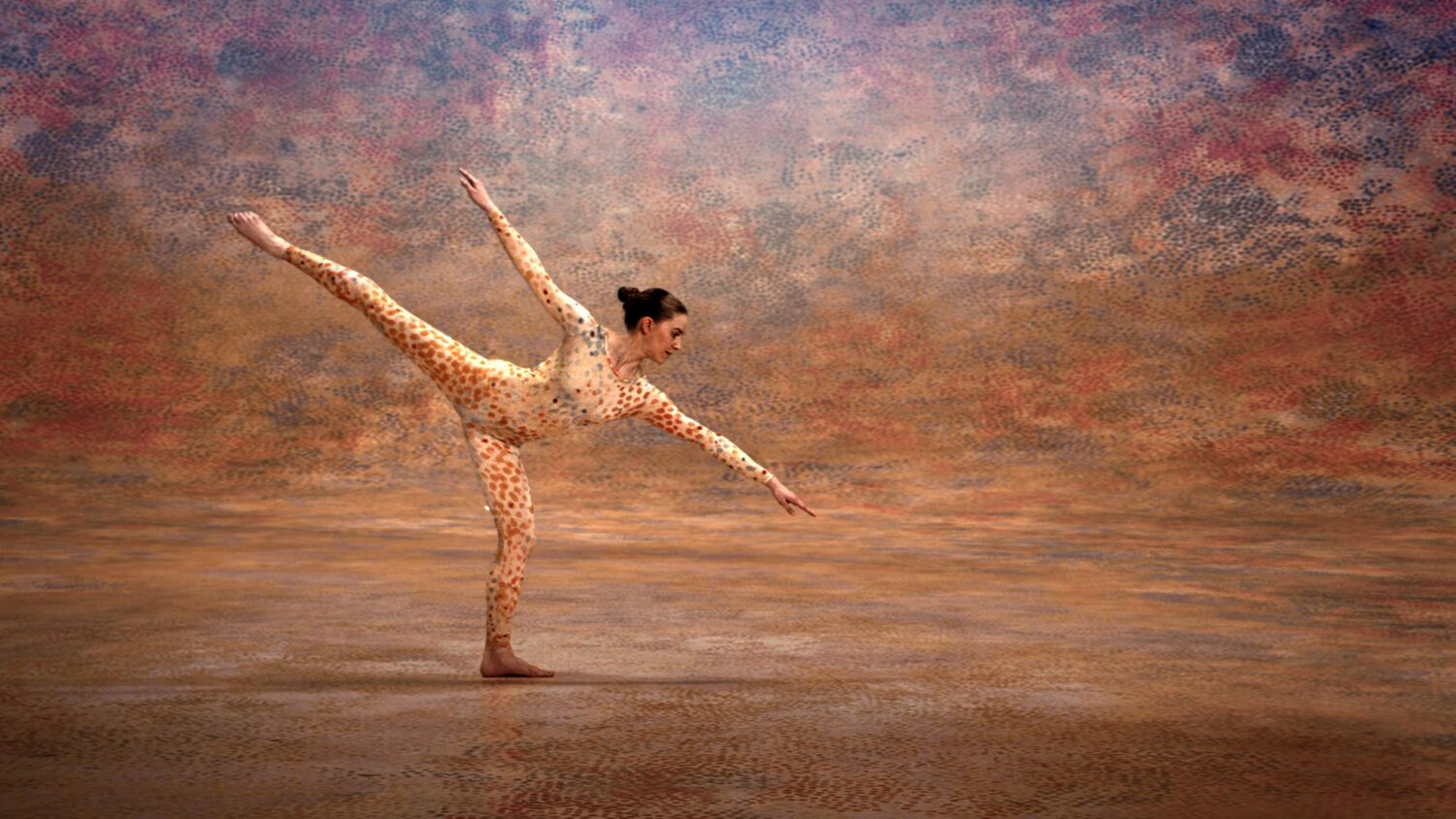
Merce Cunningham’s “Summerspace.” Photo by Mko Malkshasyan.
For Cunningham (2019), Kovgan chose a dozen or so choreographies from Merce Cunningham’s repertoire between 1944 and 1972, from Totem Ancestor (1944) to Second Hand (1970). These choreographies were then reconstructed by Cunningham experts Robert Swinston (supervising director of choreography) and Jennifer Goggans (director of choreography), and meticulously executed by the last generation of Cunningham dancers, trained by Merce Cunningham himself. Swinson (who has danced and worked for MCDC in various capacities for decades) is renowned for his work of sharing the Cunningham legacy internationally. (The dancers of his ensemble, the Centre National de Danse Contemporaine (Angers, France) also appear in the film.)
The excerpts from these recreated Cunningham choreographies were performed for the camera in site-specific locations: in a tunnel, on a rooftop of a skyscraper in New York City, in a forest, at an airport, in a cobbled courtyard etc. – the choice of places corresponding thematically to the pieces. Some of the most popular Cunningham classics, however, are shown in stage-like environments, such as the 1958 Summerspace, which is danced in ‘camouflage’ leotards against a backdrop dotted with paint, designed by Robert Rauschenberg. The dancers explore every possibility of the turning movement with breathtaking lightness. Or the 1968 RainForest, where the dancers move alongside Andy Warhol’s gently floating installation of helium-filled silver pillows.
These imaginary realities are then interspersed with a documentary-style storytelling using archive material (evoking a scrap book style by often presenting several images simultaneously), thus revealing the artistic process behind those works and the ideas that Cunningham was exploring.
The film’s narrative follows an arc from Cunningham’s solo career through his search for new means of expression, to how he found his partners and collaborators for this journey. John Cage, Carolyn Brown, Barbara Dilley, Viola Farber, Robert Rauschenberg, Valda Setterfield and Gus Solomon Jr. are some of those artists who are recalled in the film, with whom Cunningham shared “ideas and poverty”. It charts the formation of the Merce Cunningham Dance Company (MCDC), their first tour in rural America in the company’s Volkswagen minibus, the ensemble’s struggles, the first world tour in 1964 and the London breakthrough, also mentioning the conflicts and problems that wider recognition brought to the troupe. This is a rich and interesting era (combining several artistic periods), during which Cunningham developed his own movement vocabulary and technique as a choreographer, and his methods as a teacher. The narrative of the documentary is illustrated with notes and drawings from Cunningham’s journals and correspondence, archive interviews with him and the ensemble members, photos and footage. The wealth of material and the meticulous research is clearly one of the film’s strengths.
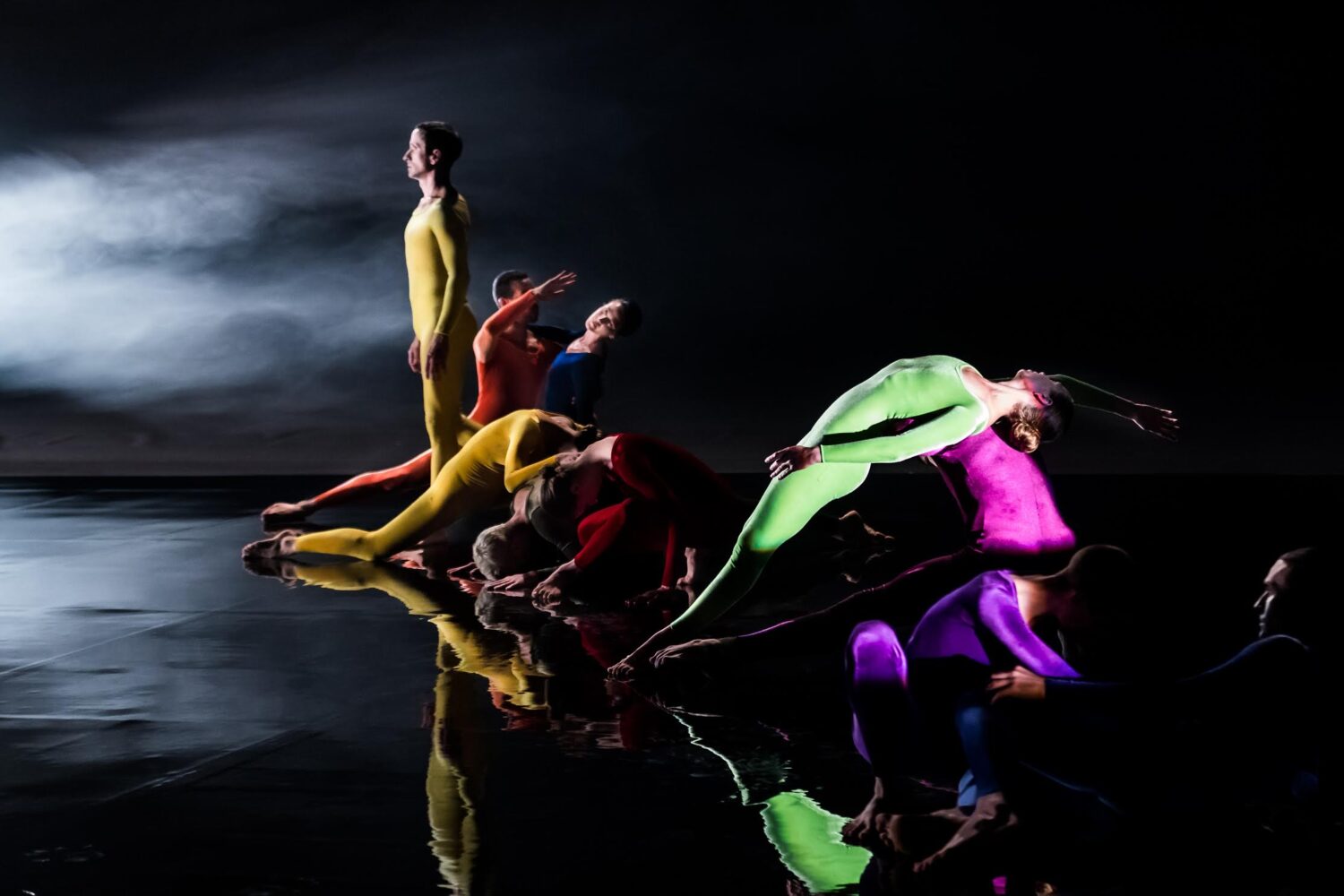
Merce Cunningham’s “Second Hand.” Photograph by Martin Miseré.
The documentary, to Kovgan’s merit, breaks with the usual (and romanticized) rags to riches narrative, and explores a different question instead: what is the thought process of an innovator, and what is the price an artist pays for recognition? Consequently, the storytelling focuses on Cunningham’s artistic journey and working processes, illustrating his development with corresponding thoughts, mainly from his own writings. The warmth, wit and humor of these writings is enchanting.
The advantage of this directorial choice is that we gain a personal view of Cunningham’s artistic process, the loss is that this is almost the only perspective we have in the film, which thus lacks an investigatory, critical stance – a prerequisite for a documentary. To Kovgan’s merit, the narrative doesn’t avoid the conflicts and problems (lack of agency for women in the choreography for instance), but these are only briefly introduced, without deeper exploration.
The film ends at the melancholic point when there are no longer any of the original members of the ensemble left in Cunningham’s company. Then an abrupt subtitle closes the story, trying to account for the remaining four (!) decades of Cunningham’s career, explaining that he carried on working almost until his death.
The aim of Kovgan’s film (to share her fascination with this icon of 20th century dance and appeal to masses of the 21st century audience) leaves the viewer with mixed feelings about the result. Sometimes, this is achieved by somewhat sacrificing Cunningham’s own aesthetics. For instance, there is something bizarre about hearing a recording of the artist talking about the puritan circumstances in which they worked and performed, and then see the same choreography performed in a lavish hotel interior.
Kovgan was clearly embarking on an exciting artistic experiment by trying to follow Cunningham’s dance filming technique and applying it to 3D, but the result remains mainly illustrative, only rarely enhancing the film’s substance. This is a missed opportunity, which we are painfully reminded of when occasionally the 3D experience combined with Kovgan’s attention to found sound comes together in a powerful rendering of one of the pieces on a New York rooftop at night, with the city’s soundscape accompanying the movements. This gives us an insight into what Cunningham (2019) might have become if the director (whose passion for and knowledge about Cunningham is without doubt) could have explored what space and physicality has to offer in these choreographies without falling into the trap of sentimentalism.
Trailer:
This post was written by the author in their personal capacity.The opinions expressed in this article are the author’s own and do not reflect the view of The Theatre Times, their staff or collaborators.
This post was written by Katalin Trencsényi.
The views expressed here belong to the author and do not necessarily reflect our views and opinions.

